
IRIS login | Reed College home Volume 94, No. 1: March 2015
Reediana Briefs

Crime-Terror Alliances and the State: Ethnonationalist and Islamist Challenges to Regional Security, by Ted Gurr ’57, coauthor (Routledge, 2013). Ted and Lyubov Grigorova Mincheva examine the trans-border connections between militant and criminal networks and the relationship between these and the states in which they operate. “Unholy alliances” is a term used to describe hybrid trans-border militant and criminal networks that pose serious threats to security in Europe and elsewhere. The authors extend the concept of unholy alliances to include the trans-state criminal syndicates that arise in failed and dysfunctional states, exemplified by Serbia and Bulgaria during their post-Communist transitions, and develop a theoretical framework that looks at four kinds of factors conditioning the interactions among the political and the criminal: trans-state identity networks, armed conflict, the balance of market opportunities and constraints, and the role of unstable and corrupt states. A second publication for Ted is Political Rebellion: Causes, Outcomes and Alternatives (Routledge, 2015). This volume comprises key essays by Ted on the causes and consequences of organized political protest and rebellion, its outcomes, and strategies for conflict management. From the Castro-inspired revolutionary movements of Latin America in the ’60s to Yugoslavia’s dissolution in ethnonational wars of the ’90s and the popular revolts of the Arab Spring, millions of people have risked their lives by participating in protests and rebellions. Based on half a century of theorizing and social science research, this book brings together Ted’s extensive knowledge and addresses the key questions surrounding this subject. Ted also published a genealogy with Paul Magel, A Gurr Family Odyssey: From England to the American West, A Social History Covering Six Generations (Winnipeg: McNally Robinson, 2014).

A Jungian Life, by Tom Kirsch ’57 (Fisher King Press, 2014). C.G. Jung, his ideas, and analytical psychology itself have been a central thread of Tom’s life. His parents were in analysis with C.G. Jung when he was born, and he was “imaged to be the product of a successful analysis.” At an early age, he was introduced to many of the first-generation analysts who surrounded Jung, and over time became acquainted with them. Later, in his roles with the International Association for Analytical Psychology, he gained a broad know-ledge of the developments in analytical psychology, and both through his early family history and in his later professional life, Tom worked closely with many analysts who were integral in forming the foundations of analytical psychology. “Tom Kirsch is one of the core creators of the Jungian world as we find it today. His knowledge of the history, the issues and the personalities is second to none. Every Jungian analyst, candidate, and scholar simply must read this book,” writes Andrew Samuels, Professor of Analytical Psychology, University of Essex. “But the way in which Kirsch situates his first-person narratives against the backdrop of world politics—in Russia, China, South Africa, and Latin America, for example—makes this memoir worthy of serious attention from non-Jungian thinkers and practitioners.”
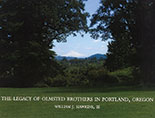
The Legacy of the Olmsted Brothers in Portland, by William Hawkins ’58 (2014). Bill’s book was written for those “who love Portland’s flowerbeds, trees, meadows, soccer fields, parkways, and graceful gazebos,” writes Mike Francis in the Oregonian in October 2014, who calls Bill a “civic treasure.” The book contains an abundance of color photos and historic maps, and traces the development of Portland’s system of parks and parkways from the establishment in 1871 of what was then called City Park, now Washington Park. The Olmsted landscape design firm, headed initially by Frederick Law Olmsted and then by his stepson, John Charles Olmsted, and his son, Frederick Law Olmsted Jr., was involved in the design of New York’s Central Park, the earliest plan for Yosemite National Park, Brooklyn’s Prospect Park, the Biltmore Estate, the U.S. Capitol grounds, and many other notable commissions. The book is available through his website, or through Powell’s, the Audubon Society of Portland, the Portland Art Museum, or Hoyt Arboretum.

Real Mysteries: Narrative and the Unknowable, by Porter Abbott ’62 (Ohio State Press, 2013). In this groundbreaking book, Porter revisits the ancient theme of what we cannot know about ourselves and others, but shifts the focus from the representation of this theme to the ways narrative can be manipulated to immerse “the willing reader” in the actual experience of unknowing. This difficult and risky art, practiced so inventively by Samuel Beckett, was also practiced by modern writers such as Gabriel García Márquez, Herman Melville, and Toni Morrison, as well as by writers such as Gertrude Stein and Pseudo-Dionysius the Areopagite. “In accessible language, Abbott shows how narrative fiction may create spaces in which our ignorance, when it is by its nature absolute, can be not only acknowledged but felt, and why this is important.”
“The ‘Domestication Syndrome’ in Mammals: A Unified Explanation Based on Neural Crest Cell Behavior and Genetics,” by Adam Wilkins ’65, was published in Genetics in July 2014. The “domestication syndrome” in animals, a problem bequeathed by Darwin, remained unsolved for more than 140 years, and Adam’s work has received tremendous coverage by the international press. The article is available at www.genetics.org.

Falling Behind? Boom, Bust and the Global Race for Scientific Talent, by Michael Teitelbaum ’66 (Princeton University Press, 2014). Michael builds his response to the questions about the United States’ current position in the global race for scientific and engineering talent by examining historical precedent. He highlights five episodes of alarm about “falling behind,” which he traces back to the end of World War II. Claims from employers and educators, widely embraced by mainstream media and political leaders, he says, have figured prominently in recent policy debates about education, federal expenditures, tax policy, and immigration. Falling Behind offers careful examinations of the existing evidence and of its use by those involved in these debates.

We Are Buyers. You Are Sellers. You’re Busted. by Dick Lee ’68 (HYMpress, 2014). Dick started writing this book—his fourth—to historically track corporate abuse of customers and describe the resulting deterioration of buyer-seller relations. “Our overriding opinion was you mass marketers didn’t know who we were, what we wanted, what we perceived and what we believed. Capitalism, if we could still call it that, kept acquiring a meaner, sharper edge.” His narrative begins in the post–World War II years, and when it reaches the 2010s, Dick makes two surprise findings. First, long-standing buyer-seller conflict is melding with more recently heightened employee anger at employers and public disgust with business buying votes with campaign cash. The combination is creating dangerously high levels of public anger directed at corporate America, he says. Second, and directly related, America is on course for an internal eruption targeting big business of a magnitude not seen since the Vietnam War and civil rights protests of the ’60s and early ’70s. Read more here.

A Companion to Urban Anthropology, by Donald Nonini ’68, editor (Wiley-Blackwell 2014). This book, which Donald describes as an attempt to be a paradigm-defining compendium of concept essays for the urban anthropology of the future, presents a collection of original essays from international scholars on key issues in urban anthropology and broader cross-disciplinary urban studies. It features newly commissioned essays from 35 leading international scholars in urban and global studies and includes essays in classic areas of concern to urban anthropologists such as built structures and urban planning, community, security, markets, and race. Forthcoming is his book “Getting By”: Class and State Formation among Chinese in Malaysia (Cornell University Press), and he is writing a study of the local food movement in the United States, which he intends to complete by 2016.

Out of the Eggs of Ants: An African Sketchbook and Other Poems, by Edward Fisher ’69 (Trafford Publishing, 2014). As a youth, growing up in a military family stationed far and wide, Edward developed an early and enduring interest in the poetry and cultural mythology of the people of the world. Out of the Eggs of Ants is his third collection of poems. Edward taught high school English as a Peace Corps volunteer in the remote Karamoja region of Uganda, East Africa, where he shepherded students through Shakespeare and their first school newspaper. In his spare time, he assisted anthropologists with data gathering and accompanied a research team from Cambridge conducting wildlife studies. He also traveled extensively, hitchhiking through the Ituri rainforest; steamboating down the Congo River to its mouth; touring Ptolemy’s fabled Mountains of the Moon; camping out near the border of south Sudan; stranded penniless in Nairobi; bartering in the marketplace in Swahili; stumbling onto a jungle enclave of undercover Cold War spies; and waking up to gunfire on the morning Idi Amin staged his bloody military coup.
“Way Out Beyond the Diminished Row,” an article by Gerson Robboy ’69, was published in Northwest Accordion News, summer quarter 2014 (Vol. 24, No. 2). The last row of buttons on the left side of the accordion plays the diminished chords, Gerson explains, and in his article he discusses putting together multiple chords in order to finger chords for which there is no button—“hence, buttons out beyond the diminished row.”


Widow Walk, by Gar LaSalle ’70 (Greenleaf Book Group, 2013). First in a saga, Widow Walk is historical fiction based on true events that occurred in 1859 in the Pacific Northwest. Isaac Ebey, a prominent U.S. citizen and one of fewer than 5000 non-native settlers in Puget Sound, was the victim of a retribution massacre perpetrated by “the Northerners,” a term used by native and nonnative inhabitants to describe marauding slaver-headhunters who traveled up and down the Pacific Coast on slaving raids. Widow Walk recounts Ebey’s widow’s attempts to retrieve her kidnapped son as well as her involvement with Captain George E. Pickett, who later attained eponymous fame at Gettysburg. While Emmy is up north searching for her son, Pickett was standing down the Brits on San Juan Island in what was later named “The Pig War.” Gar’s book received the eLit Silver Medal award in 2014 for multicultural fiction, a 2014 USA Best Book Award for Best New Novel in Historical Fiction, and was a finalist for Indie Excellence Awards in Historical Fiction. The audio book version is narrated by John Aylward. The Italian-English bilingual edition is due out in February 2015 and the Spanish translation should be out midyear. View details at www.widow-walk.com. Isthmus, the first sequel to Widow Walk, was published by Avasta Press in 2014. Set in 1860 Panama, less than a year after the events in Widow Walk, and involving some of the same characters, Gar’s story relates a fateful train ride through the Darién Jungle on the new transisthmus Panama Railroad.
Chihuly Drawings, by Matthew Kangas ’71 (Museum of Glass, 2015). Matthew’s book catalogues exhibitions of Dale Chihuly’s work over 35 years, surveying more than 180 drawings that will be showing at the Museum of Glass in Tacoma, Washington beginning this month. Matthew also serves as contributing editor for a number of publications, including Art in America, Sculpture, Art Guide Northwest, and Visual Art Source, an online weekly newsletter.

Eggs Satori, by Karen Greenbaum-Maya ’73 (Kattywompus Press, 2014). Five years ago Eggs Satori was chosen as a finalist in a competition held by PuddingHouse Publications, but its editors were hit by health crises, says Karen, and put their publications on permanent hold. When the editor of Kattywompus Press took a look at Karen’s prose poems, she accepted not only Burrowing Song (published in 2013) but also Eggs Satori. “Like Beethoven (in this regard and no other), the first is now the second.” In addition, Karen’s poem “Our Lady of the Red Potatoes,” which she worked on for six years, and is not included in this edition, has been nominated for the 2016 Pushcart Prize.

R Quick Syntax Reference, by Margot Tollefson/Conard ’73 (Apress, 2014). Margot’s book is a reference detailing the intricacies of the R language. “Not only is R a free, open-source tool, R is powerful, flexible, and has state of the art statistical techniques available.” With the many details which must be correct when using any language, this book makes using R easier. R Quick Syntax Reference is for statisticians and other data analysts who are starting to use the R language. It is also for veteran R users who want a quick reference to the language—“an excellent choice for the busy data scientist who likes to experiment with new ways of analysis and who needs the flexibility of the data editing available in R.”
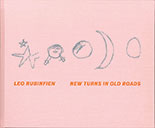
New Turns in Old Roads, the third book of photography by Leo Rubinfien ’74, was published by Taka Ishii Gallery in 2014. In addition, Chewing Gum and Chocolate, a posthumous book of photographs by Shomei Tomatsu, one of Japan’s foremost 20th-century photographers, edited by Leo, was published by Aperture Foundation in 2014.

The Never-Open Desert Diner, by James Anderson ’76 (Caravel Books, 2015). In a debut novel described by best-selling author C.J. Box (The Highway and Breaking Point) as striking, lyrical, whimsical, and atmospheric, James presents a haunting tale peopled with a cast of eccentric characters. At 38, protagonist Ben Jones is on the verge of losing his small trucking company—a career he loves. His truck route covers one of the most desolate and beautiful regions of the Utah desert, where Ben is drawn into a love affair with a mysterious woman and into the heart of a decades-old tragedy at a roadside café referred to by the locals as the Never-Open Desert Diner. In this story of love and loss, Ben discovers that the desert is relentless in its grip, and what the desert wants, it takes. “Part mystery, part love story, part meditation on place, The Never-Open Desert Diner will certainly keep readers turning the pages,” says Roland Merullo, author of Breakfast with Buddha and Vatican Waltz. William Hastings, author of The Hard Way, finds the book to be “crime fiction that transcends the noir genre, in the vein of James Lee Burke and Dennis Lehane.” The book is wrapped in a splendid cover designed by Patti Morris ’66. James has new website related to his writing.

The Eternal Letter: Two Millennia of the Classical Roman Capital, by Paul Shaw ’76, editor (MIT Press, 2015). This book contains essays by some of the most highly regarded practitioners in the fields of typography, lettering, and stone carving, who discuss the subtleties of the classical Roman capital letter itself, different iterations of it over the years, and the work of famous typographers and craftsmen. The essays cover such topics as efforts to calculate a geometric formulation of the Trajan letters; the recalculation of their proportions by early typefounders; the development and astonishing popularity of Adobe Trajan; type and letter designs by Father Edward M. Catich, Frederic W. Goudy, Eric Gill, Jan van Krimpen, Hermann Zapf, Matthew Carter, and others; the influence of Trajan in Russia; and three generations of letter carvers at the John Stevens Shop in Newport, Rhode Island. Essays about modern typefaces—including Mantinia, Senatus, and Penumbra—are contributed by the designers of these typefaces. The essay "Father Catich at Reed College" was written by Gregory Macnaughton ’89, education outreach and Calligraphy Initiative coordinator of the Cooley Gallery.
“George D. Leman: An Arts and Crafts Vernacular Rediscovered,” by Doug Forsyth ’77 (American Bungalow, December 2014). This article about an unsung Buffalo builder, who stands tall in the company of Wright and Olmsted, is the 11th and final piece in Doug’s series on historic districts in Rust Belt cities and inner-ring suburbs.
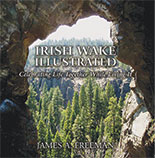
Irish Wake Illustrated: Celebrating Life Together While Living It, by James Freeman ’78 (ebook, 2014). James has published a collection of interconnected short stories, new and revised, peopled by car detailers, carpet cleaners, hospice volunteers, soldiers, teachers, fishermen, and just plain real-life fictional folk. His friend and mentor, writer Bill Hotchkiss, described the collection as the work of a master storyteller, “scintillating, heartbreaking, and often heartwarming.” James also contributes his photography to the book. A second publication is the textbook English Composition II, Best Practices: American Literature and Culture Theme (BVT Publishers, 2015). His children’s book, Lady and Sierra’s Storage Shed Summer, is available as an ebook at bn.com and Amazon.

The Age of Consequences: A Chronicle of Concern and Hope, by Courtney White ’82 (Counterpoint, 2015). Courtney’s newest book is one of questions and answers, he says, written to address difficult issues related to the health of the planet today and in the future, which are enlarged by his role as a parent. “We live in what sustainability pioneer Wes Jackson calls ‘the most important moment in human history,’ meaning we live at a decisive moment of action. The various challenges confronting us are like a bright warning light shining in the dashboard of a speeding vehicle called civilization, accompanied by an insistent and annoying buzzing sound, requiring immediate attention. I call this moment the Age of Consequences—a time when the worrying consequences of our hard partying over the past 60 years have begun to bite hard, raising difficult and anguished questions.” In 2008, he began to write, blending headlines with narrative and observation, travel, and research into chronological installments, and crossing his fingers, he says. “Answers exist if we’re willing to work together and try new ideas (and some old ones). While there’s much to worry about these days, there’s also a lot that we can do together at the grassroots—beginning literally with the grass and the roots.”

The Dung Ball Chronicle, by Wayne Miller ’83 (Kindle ebook). Wayne released a new sci-fi-satire, which updates his previous ebook and adds a second volume (learn more). Things chronicled are not what they seem. “For one, the language is all wrong: The titular dung balls are actually made of hallucinogenic mold, cultivated for relaxation by members of an intelligent bug-like alien species, but providing an immersive escape for the small number of otherworld abductees brought back to the bugs’ world. The bugs are not especially arthropodic, but a cross-melding of earthly phyla, and are more socialist than hive social.”

Brand Shift: The Future of Brands and Marketing, by Owen Shapiro ’84, coauthor (David Houle & Associates, 2014). Big Data and the future of human communications have profound implications for brands and marketing. “Brands that embrace and reflect these transformations have the potential to assume ever more important roles in our society, engendering lifestyle enhancements for consumers through trust and a commitment to serving the greater good,” says Owen. In Brand Shift, the authors provide a historical study of brands, analyze current trends, and examine how cultural change and accelerating technological advancement will affect brands and marketing in the near future. “There are many books on how to build brands in the 20th century. This is the first to show what it will take to build successful brands in the 21st century,” says Philip Kotler, S.C. Johnson & Son Distinguished Professor of International Marketing, Kellogg School of Management, Northwestern University. See more at www.brandshiftbook.com.
“Venetian Vagabonds and Furious Frenchmen: Nationalist and Cosmopolitan Impulses among Europeans in Galata,” a paper that takes as its subject a homicide in 18th-century Istanbul, was published by Julie Landweber ’93 in The Journal of Ottoman Studies (issue 44, 2014).

Portland on the Take, by J.B. (Benji) Fisher ’94, coauthor (History Press, 2014). With unprecedented access to police investigative files, Benji and J.D. Chandler bring Portland’s days of civic corruption and hidden murders out of the shadows and shed new light on Portland’s turbulent mid-20th-century past.
The essay “Monuments to Maritime Labor: the Dhow, Migration, and the Architecture of the 2022 Qatar World Cup,” by Laura Diamond Dixit ’04, was published in the Avery Review. The essay is about the working conditions of Nepali migrant workers, the juridical structures that shape migration between South Asia and the Persian Gulf, and the symbolic representation of a transnational Indian Ocean history in the 2022 World Cup. Laura is a PhD student in the Columbia University Graduate School of Architecture, Planning and Preservation.

Seagull (Thinking of You) with Family and Away Uniform, by Tina Satter MALS ’04 (53rd State Press, 2013). Tina’s first collection of plays includes Seagull (Thinking of You), a personal look at performance, failure, and attempted love; Family, which was named a top show in 2009; and Away Uniform. Tina directed students and alumni in readings from Seagull (Thinking of You) for the opening of Reed’s Performing Arts Building in 2013.
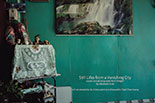
Still Lifes from a Vanishing City: Essays and Photographs from Yangon, by Elizabeth Rush (née Mueller) ’07 (Global Directions/Things Asian Press, 2015) One hundred years ago, Yangon was the most cosmopolitan of Southeast Asia’s cities, Elizabeth writes. Under British rule in the ’20s and ’30s, it was arguably the second busiest immigration port in the world, trailing only New York City. In a single century, Myanmar went from being the wealthiest country in Southeast Asia to one of the poorest on earth. In 2010 and 2011, as the junta prepared to transition from a military dictatorship to a parliamentary system, they sold over 80% of their assets; colonial-era buildings were auctioned off; many homes more than 60 years old were condemned to be replaced with high-rise condominiums. Elizabeth served as author and photographer for her new book—more than a record of Yangon’s disappearing colonial architecture, it is also an archive of the rich everyday lives people built in the wreckage of an abandoned empire.
“Checking Email Less Frequently Reduces Stress,” an article coauthored by Kostadin Kushlev ’08, was published in Computers in Human Behavior in February, 2015. Kostadin’s research on the relationship of email and stress made headlines in the Guardian, the New Republic, and the Huffington Post. The findings were that limiting the frequency of checking email throughout the day reduced daily stress; that lower daily stress predicts greater well-being; and that the frequency of checking email did not directly impact other well-being outcomes. Kosta is a PhD candidate and Vanier scholar in psychology at the University of British Columbia.

Holding onto the Sky, a play cowritten by Taiga Christie ’10, Allie Cislo ’12, Jimmy Villafranca ’12, and Shabab Mirza ’15 (and others from the Faultline Ensemble and Rosehip Medic Collective). What would happen if you could no longer cross the Willamette River to get to downtown Portland, because all of the bridges had collapsed during an earthquake? That question is just one of those explored in the play, which also examined ways in which communities unite to create networks of support. Talga served as director for the performance at the Headwaters Theatre in Portland in November 2014. The production utilized the talents of Paige Russell ’13 in costume design, Jimmy in additional roles as assistant stage manager and performer, and Corinne Bachaud ’14 and Jake Gonnella ’17 as performers. The production was funded in part by a grant from the Regional Arts and Culture Council, and encouragement was provided by Prof. Kate Bredeson [theatre 2009–], Prof. Kathleen Worley [theatre 1985–2014], and technical director Kristeen Crosser [theatre 2006–11].

14: Dred Scott, Wong Kim Ark & Vanessa Lopez, by Roland Wu ’13 (2014, Graham Street Productions). This documentary explores the recurring question of who has the right to be an American citizen and examines the citizenship clause of the 14th Amendment through the lives of three ordinary and extraordinary American families who changed history by challenging the status quo. Roland has made three other documentaries, La Fragua; Edna Vazquez: Portrait in Three Colors; and There Are No Birds in the Nests of Yesterday. See more at www.rolanddahwen.com.
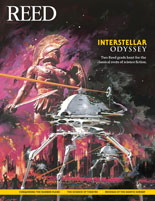
LATEST COMMENTS
steve-jobs-1976 I knew Steve Jobs when he was on the second floor of Quincy. (Fall...
Utnapishtim - 2 weeks ago
Prof. Mason Drukman [political science 1964–70] This is gold, pure gold. God bless, Prof. Drukman.
puredog - 1 month ago
virginia-davis-1965 Such a good friend & compatriot in the day of Satyricon...
czarchasm - 4 months ago
John Peara Baba 1990 John died of a broken heart from losing his mom and then his...
kodachrome - 7 months ago
Carol Sawyer 1962 Who wrote this obit? I'm writing something about Carol Sawyer...
MsLaurie Pepper - 8 months ago
William W. Wissman MAT 1969 ...and THREE sisters. Sabra, the oldest, Mary, the middle, and...
riclf - 10 months ago